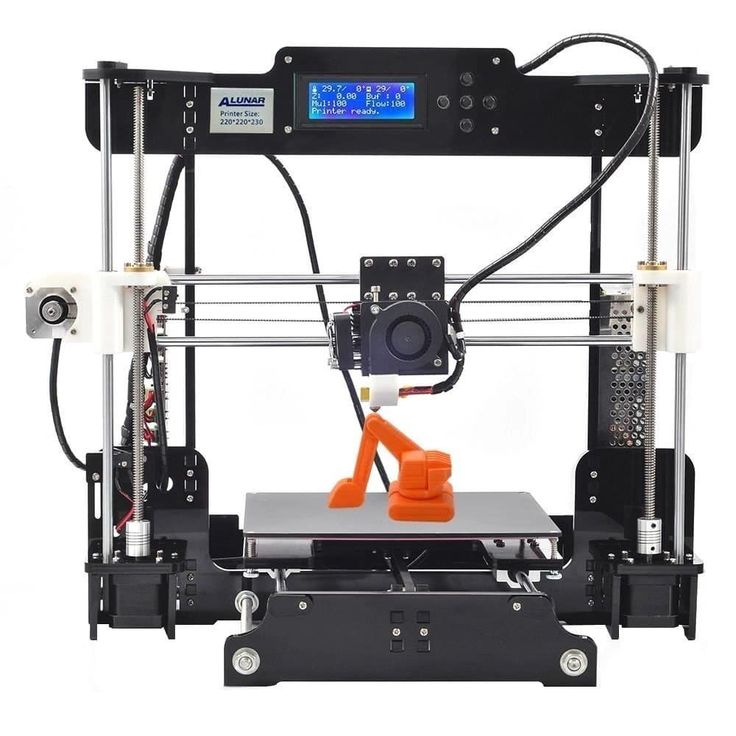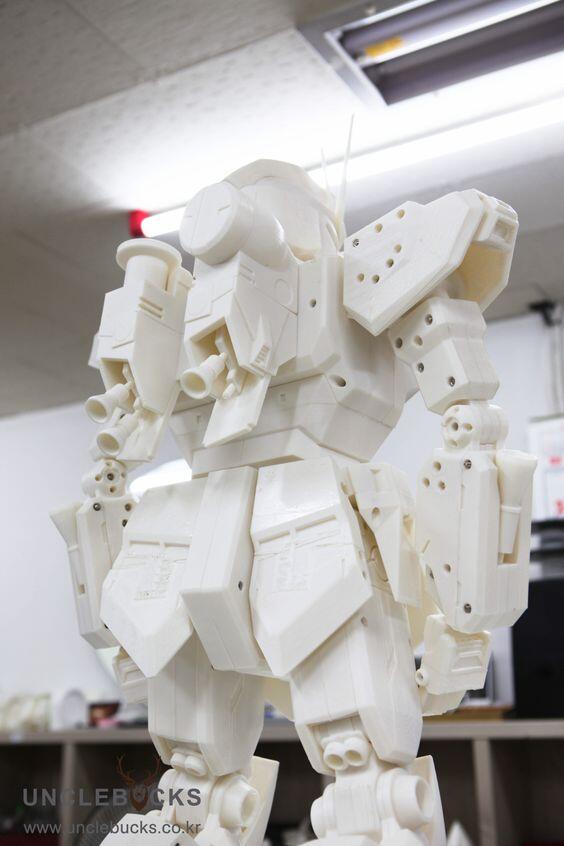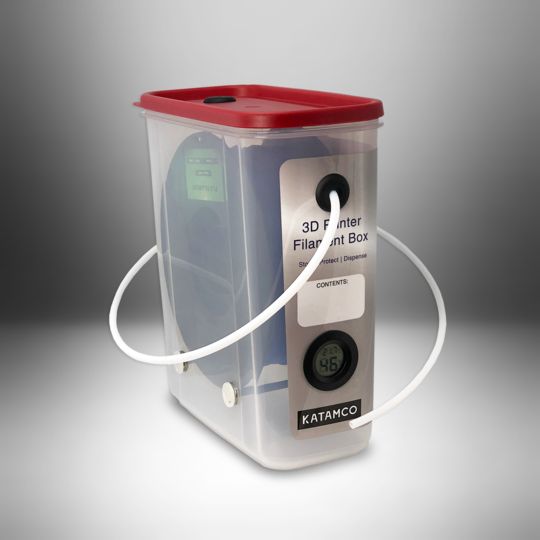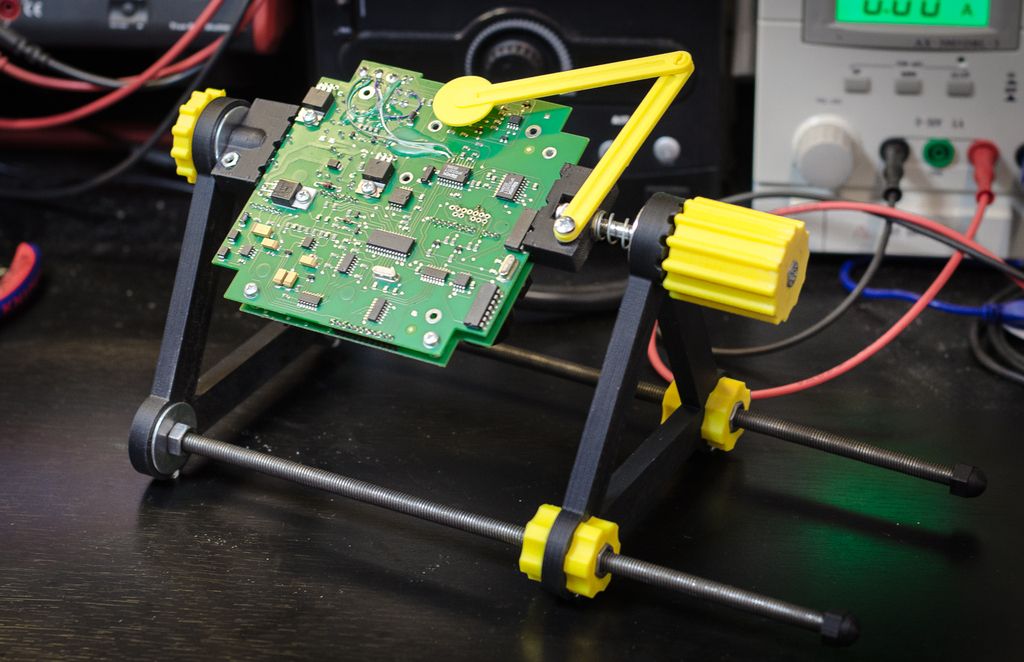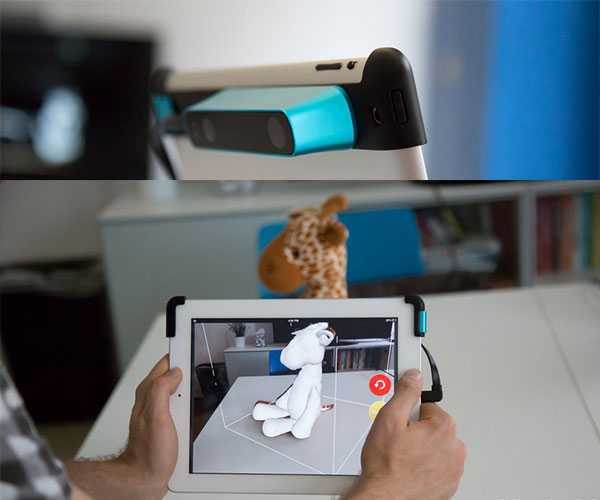Weird 3d printer filament
Some of the Most Surprising 3D Printing Materials Currently Available
Published on January 7, 2022 by Alexandrea P.
3D printing with classic materials such as plastic, metal or ceramics is widespread. In the meantime, however, there are a variety of material alternatives that are not only unusual, but also can make the 3D-printed part even more special. In our selection, we introduce you to these unusual materials. From chocolate to salt to recycled plastic waste or ash, you can now design extraordinary and unusual objects. In some cases, these materials even prove to be an excellent alternative to plastic, reducing over-consumption and the environmental impact that comes with it. Today, we’re taking a look at these surprising materials for 3D printing that you might not expect at first glance.
3D printing material from the sea
Filaments are still the most commonly used materials for 3D printing today, mainly because FDM machines are easily accessible. But did you know that some filaments are already made from shellfish and crustaceans? French company Francofil offers materials made from PLA and the shells of mussels, scallops and oysters. These shells come from recycled food service waste and are crushed to be made into filaments. The materials are manufactured in France and can be printed like conventional PLA.
Photo Credits: Francofil
Locally sourced salt
Emerging Objects is an American company that uses new technologies with innovative materials to create impressive projects. Among the most outstanding initiatives is Saltygloo, a structure made by 3D printing salt. The salt used was collected locally in San Francisco Bay. About 500,000 tons of sea salt are produced here annually due to the climatic conditions. The salt was used to additively manufacture lightweight structures on a large scale. In addition to Saltygloo, the company is known for other salt projects, such as the GEOtube tower and the construction of houses.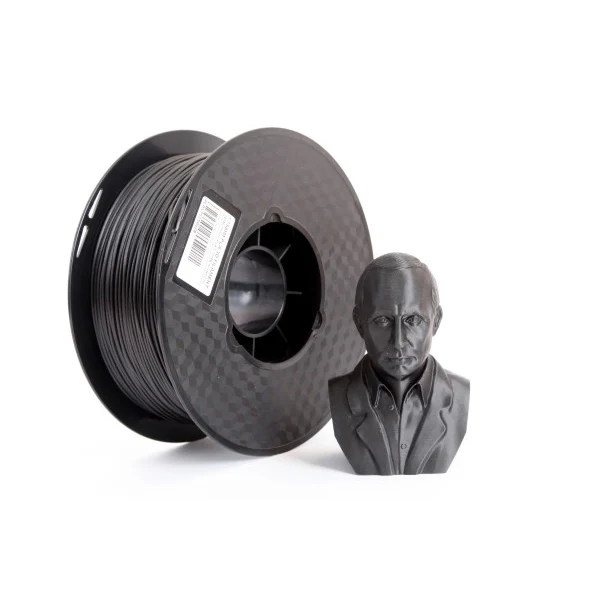
Photo Credits: Matthew Millman
Chocolate, the sweetest 3D printing material
This 3D printing material may not be as exceptional as some of the others on the list, but it is certainly among the most commonly used. The chocolate 3D printing process is similar to FDM technology, but it has different cooling properties than plastic, so the process takes longer. The popularity of this technology has increased over the years, prompting many companies to develop various projects and even chocolate 3D printers. Among the most famous is the collaboration between 3D Systems and Hershey’s, one of the largest chocolate manufacturers. We have also featured some 3D printers that can make delicious sweets, such as mycusini or Print2Taste. If you want to learn more about this technology, don’t miss the video below.
3D printing material from ashes to remember your loved ones
The Spanish company Narbón is dedicated to introducing new technologies and innovations in the funeral sector. The 3DMemories service uses 3D printing to create original, unique and exclusive ceramic jewelry from the ashes, hair, DNA or skeletal remains of a loved one. To do this, the pattern must be processed and then combined with porcelain before the jewelry can be 3D printed. Then the enamel is applied and the piece is fixed. The service offers a range of products for men and women. Undoubtedly, 3DMemories with its range of jewelry represents an exceptional way to remember the loved one.
The 3DMemories service uses 3D printing to create original, unique and exclusive ceramic jewelry from the ashes, hair, DNA or skeletal remains of a loved one. To do this, the pattern must be processed and then combined with porcelain before the jewelry can be 3D printed. Then the enamel is applied and the piece is fixed. The service offers a range of products for men and women. Undoubtedly, 3DMemories with its range of jewelry represents an exceptional way to remember the loved one.
Photo Credits: Narbón
Wood-based filaments
Wood- or plant-based filaments have also been available on the market for some time. For example, the Dutch company ColorFabb offers several filament alternatives in this category. What began in 2014 with BambooFill was expanded in the years that followed with CorkFill and WoodFill. The wood fibers are typically mixed into a PLA/PHA base and give parts a natural, high-quality finish. Whether used to make figurines, furniture pieces or wall decorations, the filaments can be used wherever a wooden look is desirable.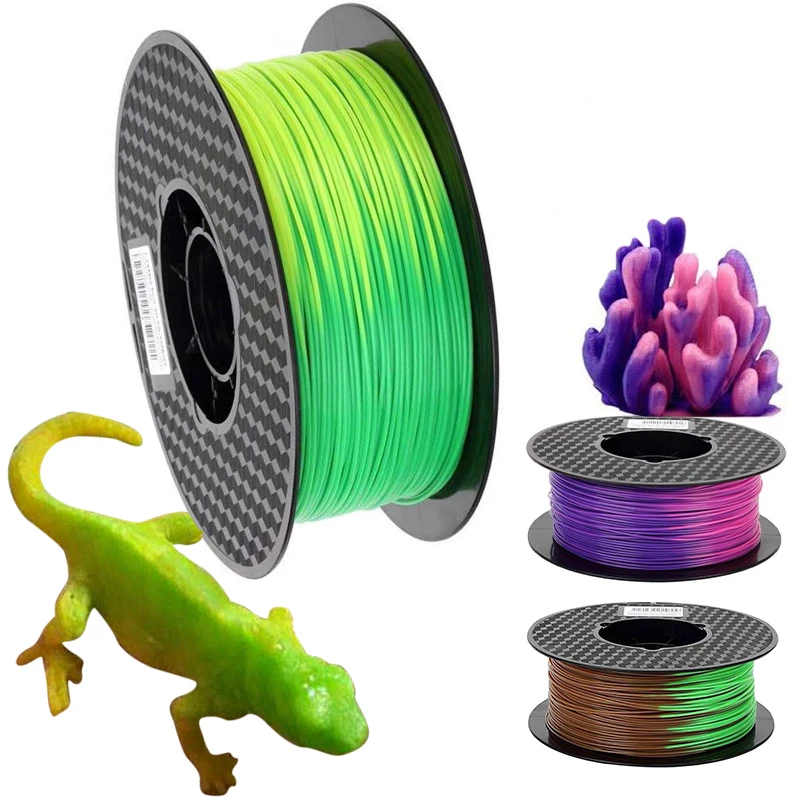 While ColorFabb has since discontinued its BambooFill, a similar product can be purchased in the form of Wood Bamboo from AzureFilm. According to the company, 40% recycled wood is mixed with 60% polymers for this purpose. However, to avoid problems when printing with this filament, it is recommended to reduce the printing speed. With Entwined™, the US company Fuel 3D also offers a sustainable PLA-based filament with hemp additive.
While ColorFabb has since discontinued its BambooFill, a similar product can be purchased in the form of Wood Bamboo from AzureFilm. According to the company, 40% recycled wood is mixed with 60% polymers for this purpose. However, to avoid problems when printing with this filament, it is recommended to reduce the printing speed. With Entwined™, the US company Fuel 3D also offers a sustainable PLA-based filament with hemp additive.
Left: ColorFabb, Right: Azure Film
A different use for linen
Another alternative to traditional filaments is a composite material made of PLA and flax from French manufacturer Nanovia. The company says that this composite material is not only a sustainable alternative to traditional filaments, but also offers the possibility of obtaining different shades of brown by applying different printing parameters. This can be achieved by simply changing the printing temperature during the manufacturing process. As far as finishing is concerned, the manufacturer recommends sealing the printed parts with a UV protection treatment so that the printed parts remain intact as long as possible.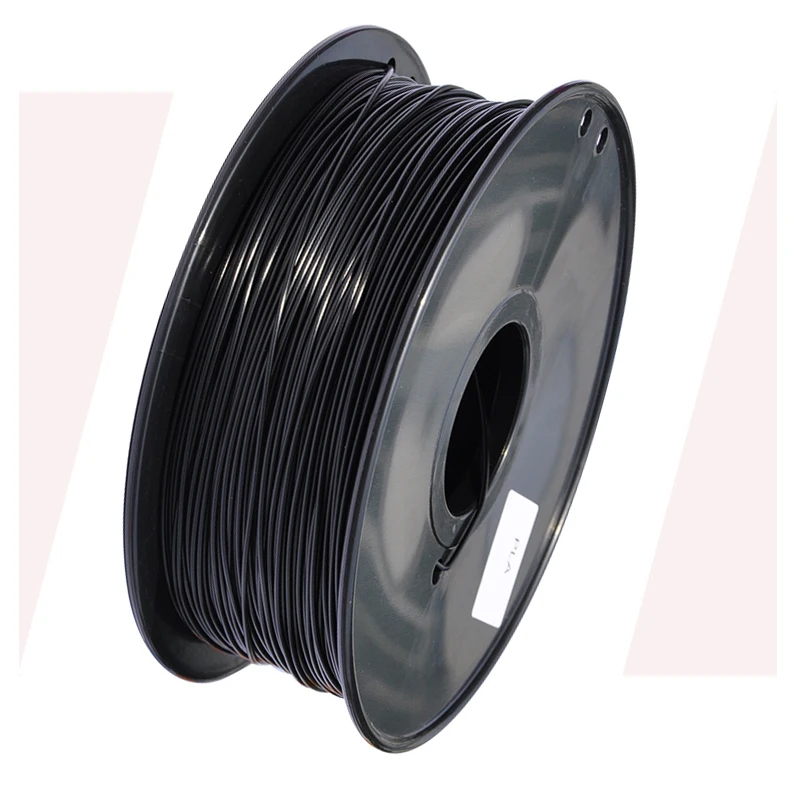
Photo Credits: Nanovia.
3D printing with sugar
Sugar Lab was acquired by 3D Systems almost ten years ago, but spun out in 2020 and refounded as a direct-to-consumer specialty confections 3D printing company. Using the Brill 3D Culinary Studio, which was originally developed by 3D Systems and called ChefJet Pro, the company creates candy and decorations in complex shapes. The Los Angeles-based company says it is capable of producing candies in all flavors and colors. Whether it’s for birthdays, weddings or Christmas parties, The Sugar Lab offers all kinds of candy from the 3D printer. And as for quantity, the 3D printer seems to be able to produce hundreds of confections per day. While The Sugar Lab is the most well-known company using sugar as a printing material, other companies such as The Modernist Cuisine are also trying their hand at 3D printing with sugar.
3D printing with glass
Glass has been popular in numerous industries for many years and is also used in additive manufacturing. Several researchers, for example from MIT or Lawrence Livermore National Laboratory (LLNL), have developed 3D printing solutions to make glass printable. For example, the MIT team developed the G3DP2 machine, which can process 5 kg of glass per hour. With this machine, the researchers managed to create 3-meter-high glass columns at Milan Design Week. Recently, the startup Glassomer also presented its technology for 3D printing glass. The company is developing a material made of fine glass powder and plastic binder that can be processed by SLA printers.
Several researchers, for example from MIT or Lawrence Livermore National Laboratory (LLNL), have developed 3D printing solutions to make glass printable. For example, the MIT team developed the G3DP2 machine, which can process 5 kg of glass per hour. With this machine, the researchers managed to create 3-meter-high glass columns at Milan Design Week. Recently, the startup Glassomer also presented its technology for 3D printing glass. The company is developing a material made of fine glass powder and plastic binder that can be processed by SLA printers.
Photo Credits: Glassomer
Filaments made from recycled plastic
The topic of sustainability is increasingly coming into focus in the field of additive manufacturing, which is why many companies are looking for alternatives. In recent years, several interesting products have been developed that aim to make 3D printing more sustainable by producing filaments from recycled plastic. One such project is Print The City by The New Raw, where plastics from the waste of Amsterdam and Thessaloniki residents are converted into 3D printing filament and used to print benches and other street furniture.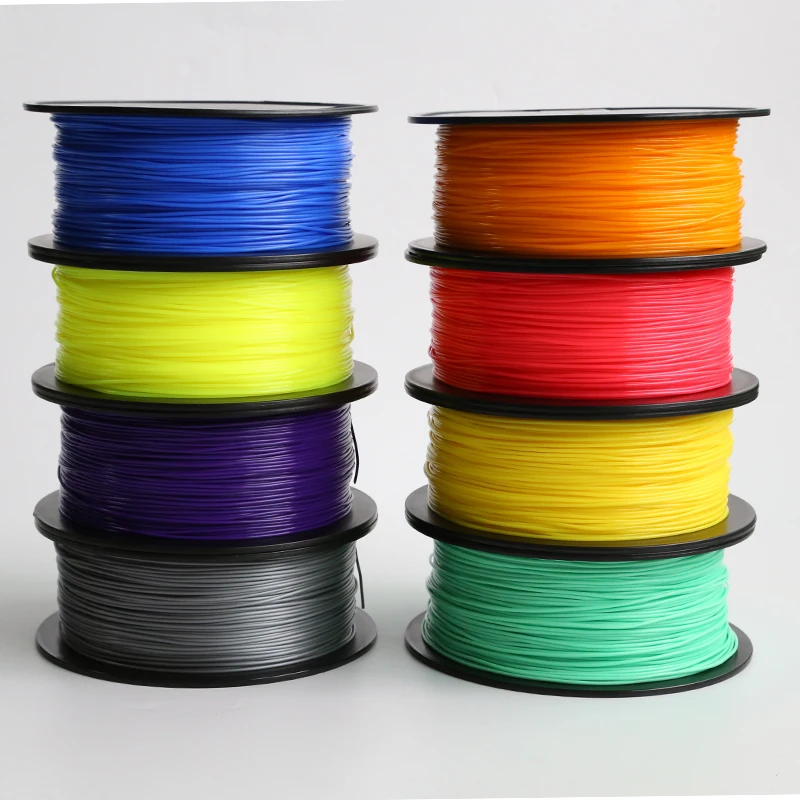 Another initiative is the Million Waves Project, which aims to produce filament from recycled PET to 3D print prosthetic limbs for those in need. Another example is the ZUV tricycle, which was printed in Austria by EOOS using filaments made from 70 kilos of plastic waste from supermarkets in Vienna.
Another initiative is the Million Waves Project, which aims to produce filament from recycled PET to 3D print prosthetic limbs for those in need. Another example is the ZUV tricycle, which was printed in Austria by EOOS using filaments made from 70 kilos of plastic waste from supermarkets in Vienna.
Photo Credits: The New Raw
A 3D printing material inspired by ivory
Among the multitude of materials used for 3D printing, there are some that have been developed ad hoc to meet specific requirement and solve old problems in an innovative way. One such material is Digory, which was developed by the University of Vienna in collaboration with Cubicure GmbH to meet the need for restoration of ancient monuments and objects made of ivory. It is a synthetic resin containing calcium phosphate particles and silicon oxide powder. Researchers have developed this new material with ivory-like characteristics and properties to restore objects using 3D printing or SLA technology. The similarity between the two materials is remarkable – there is hardly any difference!
The digory material on the right, is very similar to the real ivory on the left (photo credits: Vienna University of Technology)
Clay as a more sustainable 3D printing material
One unusual 3D printing material that has certainly been getting notice in recent years is clay.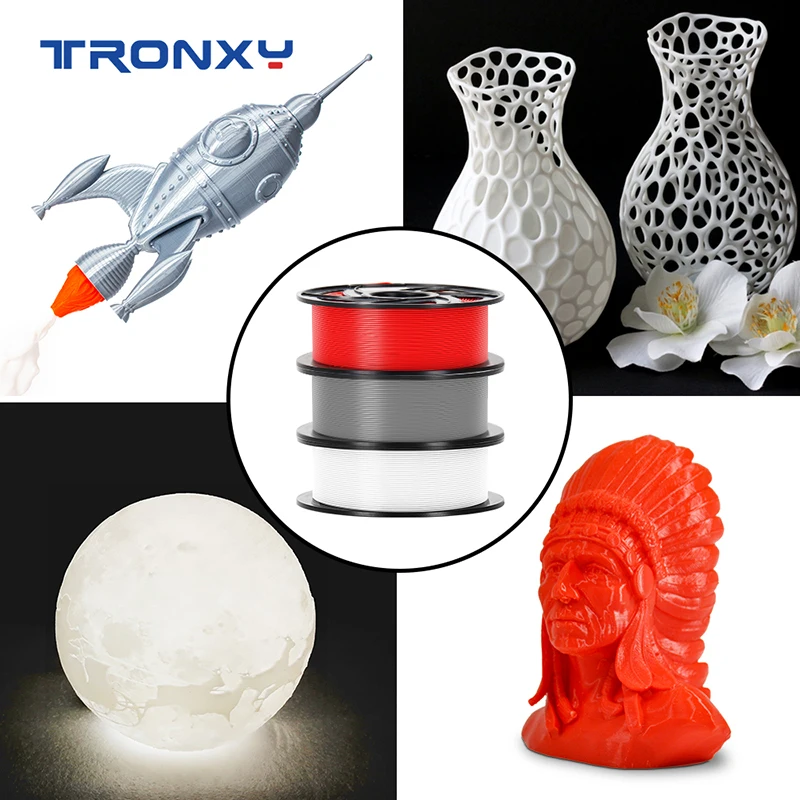 Technically a subsection of ceramic 3D printing, which, though difficult to print with, is known for its incredible properties, the use of clay in particular has been especially popularized through the work of Italian company WASP. For example, we recently saw that WASP and Honda have been using clay 3D printing to create more sustainable vehicles. There are many other usages as well, though many center on sustainability due to clay’s properties. This can be seen with projects like archiREEF’s terracotta tiles to restore coral in Hong Kong or 3D printed clay containers designed to reduce food waste.
Technically a subsection of ceramic 3D printing, which, though difficult to print with, is known for its incredible properties, the use of clay in particular has been especially popularized through the work of Italian company WASP. For example, we recently saw that WASP and Honda have been using clay 3D printing to create more sustainable vehicles. There are many other usages as well, though many center on sustainability due to clay’s properties. This can be seen with projects like archiREEF’s terracotta tiles to restore coral in Hong Kong or 3D printed clay containers designed to reduce food waste.
Photo Credits: Jonathan Keep
Diamond – 3D printing the hardest material on Earth
It may come as a surprise to many that it is in fact possible to 3D print one of the hardest materials on Earth, diamond. Back in 2019, Sandvik Additive Manufacturing announced that it had made the first ever 3D printed diamond composite. Though it does not sparkle, it would allow manufacturers to 3D print with this super-hard material, helping to revolutionize especially the tooling industry. Diamond has often been used in industries as far-ranged as mining and drilling to machining and medical implants especially because of its wear-resistant properties, but it is hard to machine. With this composite breakthrough, Sandvik claims that it is now possible to 3D print the material in highly complex shapes, and the company has high hopes for its applications in the near future.
Diamond has often been used in industries as far-ranged as mining and drilling to machining and medical implants especially because of its wear-resistant properties, but it is hard to machine. With this composite breakthrough, Sandvik claims that it is now possible to 3D print the material in highly complex shapes, and the company has high hopes for its applications in the near future.
Printing with human cells
When it comes to 3D printing in the medical sector, often people’s minds turn to bioprinting. In bioprinting, cellular structures, including human ones, are made from bioinks which have been loaded with stem cells. Like in regular 3D printing, the biomaterial can then be deposited layer by layer to make things like skin, tissue, bone and even organs. Though it is still relatively in its infancy as a technology when it comes to creating viable long-term solutions, already we have seen a number of exciting projects using the technology.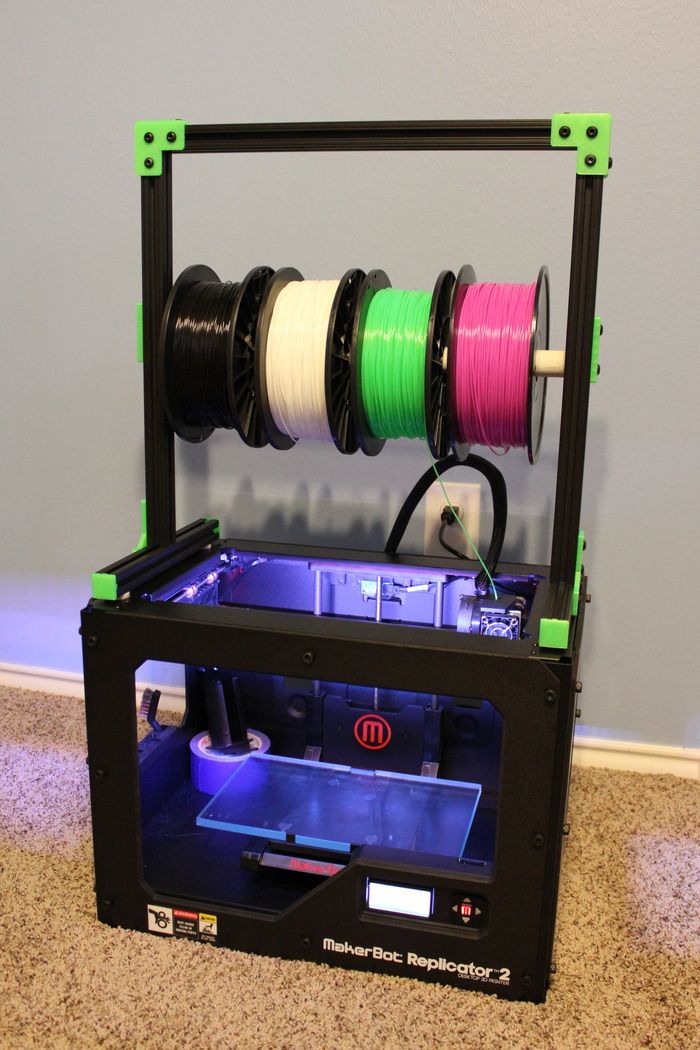 Notably, researchers have experimented with 3D printing organs including a heart, a kidney, a pancreas and a liver, among others. Others have also devised a way to bioprint with ceramics and bioinks to recreate bones within the human body. You can find out more information in the video below.
Notably, researchers have experimented with 3D printing organs including a heart, a kidney, a pancreas and a liver, among others. Others have also devised a way to bioprint with ceramics and bioinks to recreate bones within the human body. You can find out more information in the video below.
What do you think of our list of surprising 3D printing materials? Let us know in a comment below or on our Linkedin, Facebook, and Twitter pages! Don’t forget to sign up for our free weekly Newsletter here, the latest 3D printing news straight to your inbox! You can also find all our videos on our YouTube channel.
6 Exotic Filaments You Should Try in Your 3D Printer
3D Printing & Imaging Digital Fabrication
Many of these infuse common PLA or ABS with additives, and print with normal settings.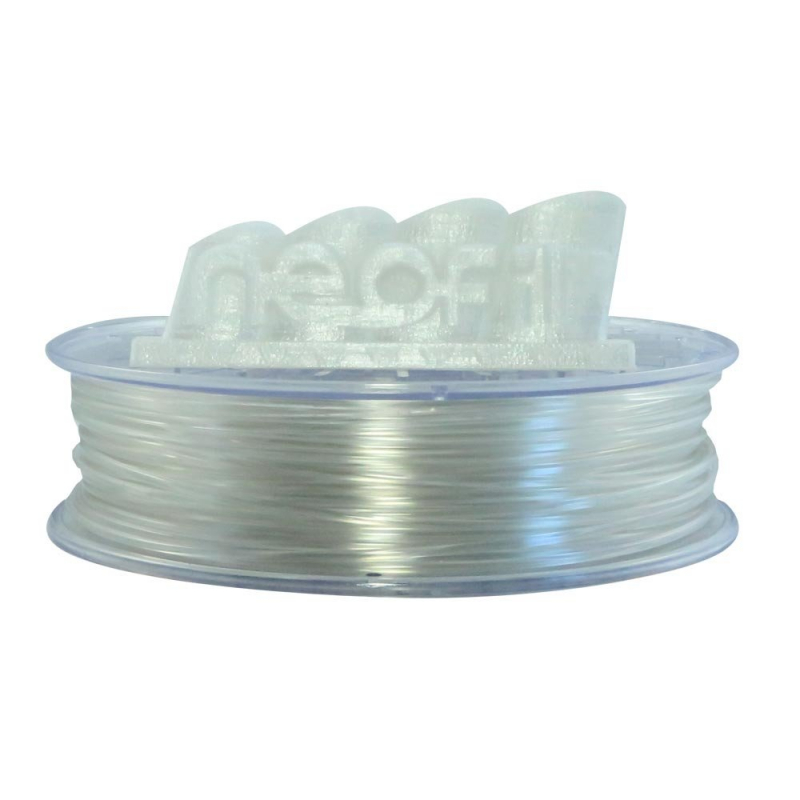 Others require much higher temperatures and slower speeds. Some may even wear out your nozzle. Still, the right material can take your next project from neat to remarkable. Here are our favorite other materials this year, and a little bit about what makes them great.
Others require much higher temperatures and slower speeds. Some may even wear out your nozzle. Still, the right material can take your next project from neat to remarkable. Here are our favorite other materials this year, and a little bit about what makes them great.
Colorfabb bronzeFill
Essentially PLA blended with powdered bronze, bronzeFill comes out looking more metal than plastic. It has noticeable added heft; it can even be polished, tarnished, or weathered to look like pure bronze. BronzeFill makes what might look like a plastic toy seem like a venerable bronzed bust.
Proto-Pasta Magnetic Iron PLA
Like bronzeFill, this PLA infused with powdered iron produces a metallic result, but the grainy gunmetal finish has its own somber flair. Instead of tarnish, a real rusted look is possible. Plus, you can get this PLA to stick to magnets — a mechanical property that might be useful to inventive Makers. Be careful though, it’s quite abrasive and can accelerate the wear of your nozzle.
Proto-Pasta Conductive PLA
Adding carbon black to PLA creates a conductive plastic that is slightly more flexible than normal. Although it has reduced layer adhesion, that’s a small price to pay for charge mobility! While not quite conductive enough to be a media for making functional circuit boards, this material sticks well to PLA and is suitable for making dual extrusion structures with electrical properties.
Various Wood Filaments
There are an increasing number of wood-fiber based PLAs springing up. They offer a very convincing wood finish of various hues. However, already saturated with plastic they are not particularly thirsty for stains, varnishes, or other sink-in wood treatments. The enhanced pulchritude comes at the cost of reduced flexibility and tensile strength.
NinjaFlex
Made from thermoplastic elastomers, NinjaFlex filament creates prints that are super stretchable, surviving punishment no ABS or PLA could tolerate.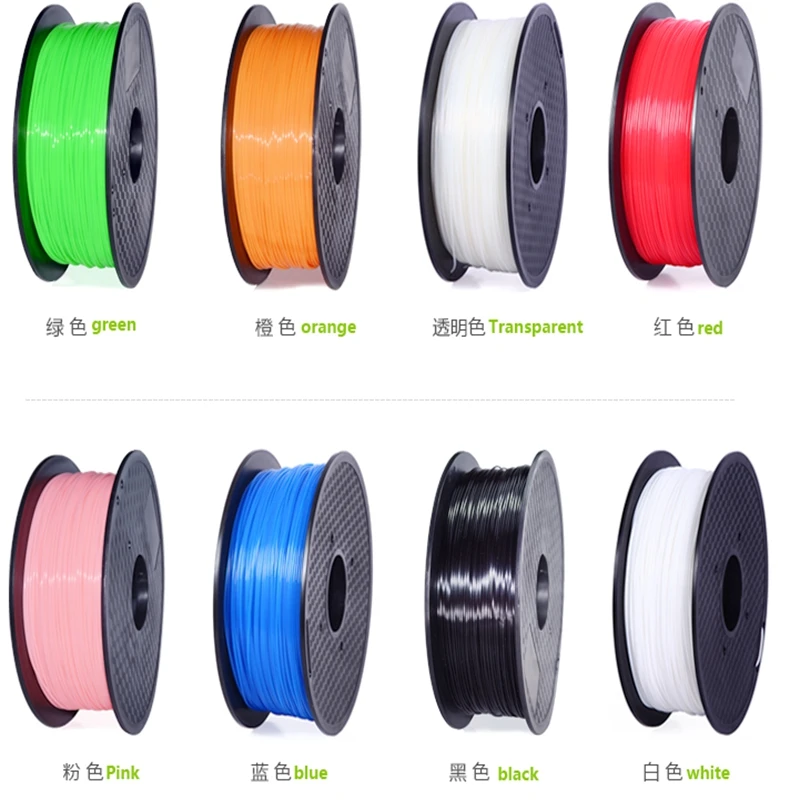 Be warned, though, this stuff has a devilish tendency to squeeze out of your extruder in directions other than though the nozzle.
Be warned, though, this stuff has a devilish tendency to squeeze out of your extruder in directions other than though the nozzle.
Taulman Bridge
Nylons can be vexing, not sticking to anything else, causing stubborn rubbery extruder jams, and requiring very high extruder temperatures. But Taulman concocted Bridge to cross the printable-nylon gap from challenging to eminently printable. It melts at lower temperatures, extrudes more stiffly, and with a bit of glue stick on your platform, lets you print a space-age material. Super tough, mildly flexible, and impervious to glue, nylon parts can be a superior addition to any mechanical design. Bridge filament is highly susceptible to moisture, however, so keep it dry.
Tagged 3D Printing filament make48How PLA is made for 3d printers. Report from the shop / Sudo Null IT News
A pistol shot was the signal to create a business.
In order to dispel the myths that plastic spools for 3d printers grow on trees can only be bought and resold, as well as that it is enough to buy an all-in-one extruder and start your own business, I went on reconnaissance to the Moscow manufacturers of ABS and PLA (and HIPS).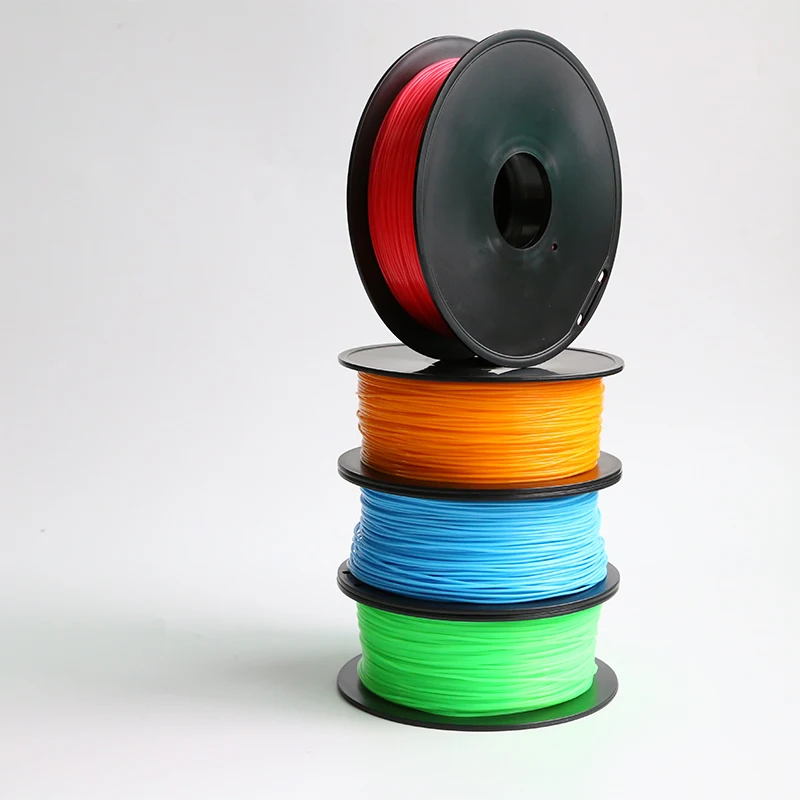 Indeed, I ended up in a professional workshop with industrial equipment, with high-precision measuring and control devices, high standards of cleanliness (because the production process is very responsible) and sociable founders (ready to share knowledge with an inquisitive and thinking audience), who have a lot of techno-creative ideas and takeover plans
Indeed, I ended up in a professional workshop with industrial equipment, with high-precision measuring and control devices, high standards of cleanliness (because the production process is very responsible) and sociable founders (ready to share knowledge with an inquisitive and thinking audience), who have a lot of techno-creative ideas and takeover plans world market. (+5 National Pride Level)
As the co-founder of the company told me: "First we saw a fruit knife open and an orange peeled with it, then the video of Cody Wilson's gun came as a shock and away we go..."
At the time when I wrote the first 2 articles about 3d printers on Habré (spring 2013), these guys had already started creating a plastic production business. It is interesting that both I and they came up with a similar idea, how to supplement the saying, they say, a person can endlessly look at fire, water, how another person works and how a 3d printer prints.
Polylactide (PLA, PLA) is a biodegradable, biocompatible, thermoplastic, aliphatic polyester whose monomer is lactic acid. The raw materials for production are annually renewable resources such as corn and sugar cane. It is used for the production of products with a short service life (food packaging, disposable tableware, bags, various containers), as well as in medicine, for the production of surgical sutures and pins.
The raw materials for production are annually renewable resources such as corn and sugar cane. It is used for the production of products with a short service life (food packaging, disposable tableware, bags, various containers), as well as in medicine, for the production of surgical sutures and pins.
Under the cut - the main stages of turning raw materials into coils with PLA for 3d printers
Shop panorama
Right to left
There was a corn, then it is processed into such balls and put in such boxes
About 900 kg of plastic is obtained from a ton of raw materials
Since this is a natural product, it is afraid of light and moisture, so it is protected with such a bag and a piece of silica gel
And this is a "vacuum cleaner" with which 100 kg of "corn balls" are scooped up and sent to container
Here the raw materials are dried, while the smell is like in a confectionery
Add a “pinch” of dye (also completely natural, Austrian quality)
Here the raw material is heated and turns into a viscous mass.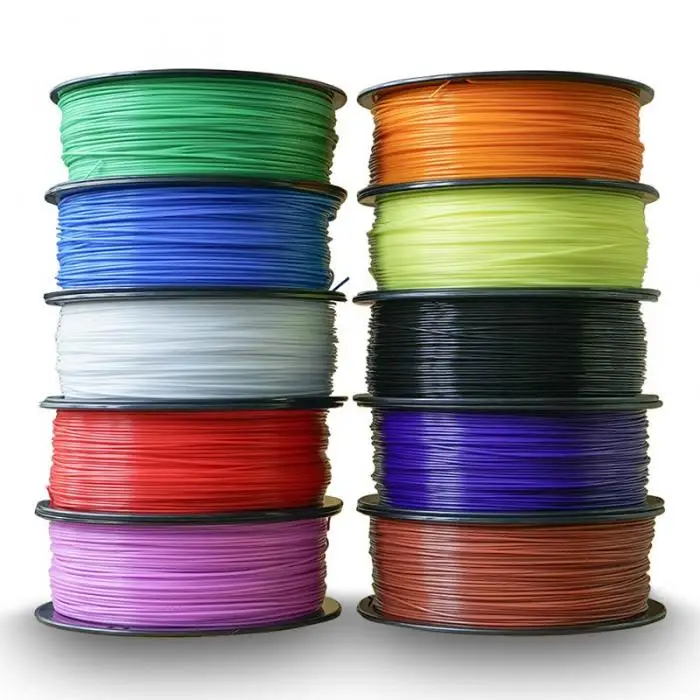
Under the pressure of the shaft, we pass through the heating elements.
The diameter of the outlet of the "furnace" is about 3 mm, the plastic acquires the desired diameter (1.75 mm) due to the fact that it is immediately pulled, and the draft is very precisely adjusted
Bosh. For ABS and PLA different temperatures
The diameter of the cooled plastic is measured by a laser device. Thread diameter tolerance set to ±0.03 mm
Remote monitoring of plastic diameter
Laser threading speed 55 meters per minute
Traction management. It is the thrust that creates the desired diameter. Using this unit, you can very accurately select the thrust of the motors and thereby adjust the diameter of the plastic.
"Spindle" - controls the speed of winding on the coil. No on COIL.
Here is the COIL.
Without plastic
It is important to note the uniformity of filling the spool
After the large spool is full, it is removed and the thread is rewound onto small (usual for everyone) spools.
Ordinary coils fall into the caring hands of the girl who completes the box
Dust-proof bag, moisture-proof silica gel, strong box to protect from direct sunlight and stickers. The stickers indicate the recommended melting temperature (they are different for ABS and PLA), filament diameter, weight and material.
From here they will go all over Moscow and the CIS countries
Purity
What I noticed is that the workshop is very clean, all measures have been taken to keep dust as low as possible: windows are sealed with adhesive tape, cleaning is often done, antistatic liquid is used, especially important places are covered with polyethylene.
soluble plastic
high-strength polystyrene (HIPS), which in its characteristics is very similar to conventional ABS (for which Rep 2X is “optimized”). HIPS dissolves in limonene, a citrus-based substance.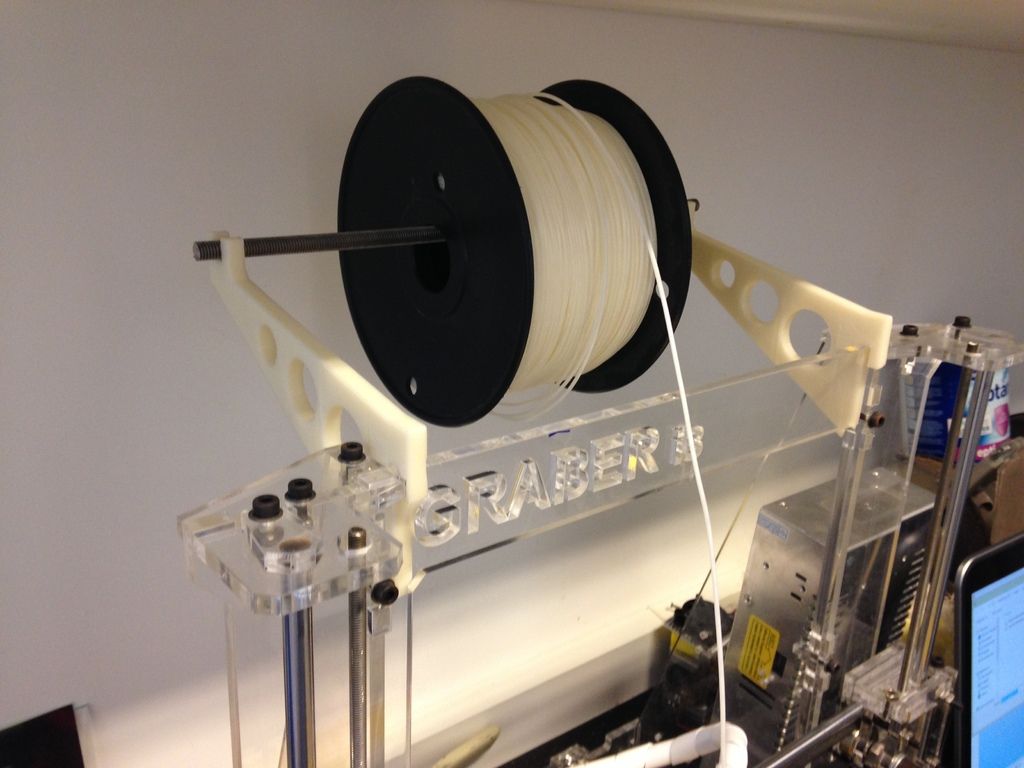 Complex objects can be printed with standard ABS or PLA, and HIPS can be used as support material. The final product is immersed in a limonene bath where the HIPS dissolves in a few hours. In addition, HIPS has a close operating temperature, adheres well to ABS and the platform. The consumption of limonene is small, since most of the support is usually removed by hand. A lemon bath is a slightly more complicated procedure than if it were ordinary water, but it has its own plus: after bathing, the item smells like lemon.
Complex objects can be printed with standard ABS or PLA, and HIPS can be used as support material. The final product is immersed in a limonene bath where the HIPS dissolves in a few hours. In addition, HIPS has a close operating temperature, adheres well to ABS and the platform. The consumption of limonene is small, since most of the support is usually removed by hand. A lemon bath is a slightly more complicated procedure than if it were ordinary water, but it has its own plus: after bathing, the item smells like lemon.
A couple of tips on how to choose good plastic.
PLA is very sensitive to storage conditions (dark, dry and dust-free). The twig should be clean, without inclusions, smooth, without delamination, on the surface - a slight sheen.
The presence of foreign bodies is checked at the rupture site. If you pull yourself up and tear a piece of plastic (and it breaks where it is “thin”), then the place of the gap should be uniform - this is a sign of good quality.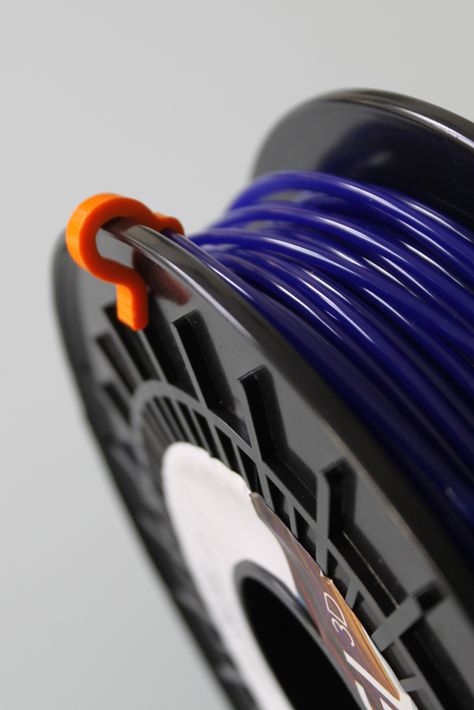
Durability/Biodegradability
(picture for investors-ecologists)
But these are similar to the truth
Examples from PLA
Extruder of the thread for 3D printer
Subscribe to the author
Sign
88
Good afternoon!
I want to share my experience in assembling a filament extruder for a 3D printer. I must admit that I collected slowly due to various circumstances. Just a colossal number of mistakes were made :)) As a rule, some mistakes cost both money and time. First of all, the mechanics turned out to be the most difficult for me. Due to the lack of centering of the auger, the grinding on the sleeve completely upset me and forced me to redo the mechanics every time. The most optimal for me was the installation of the auger directly into the gearbox without any additional bearings.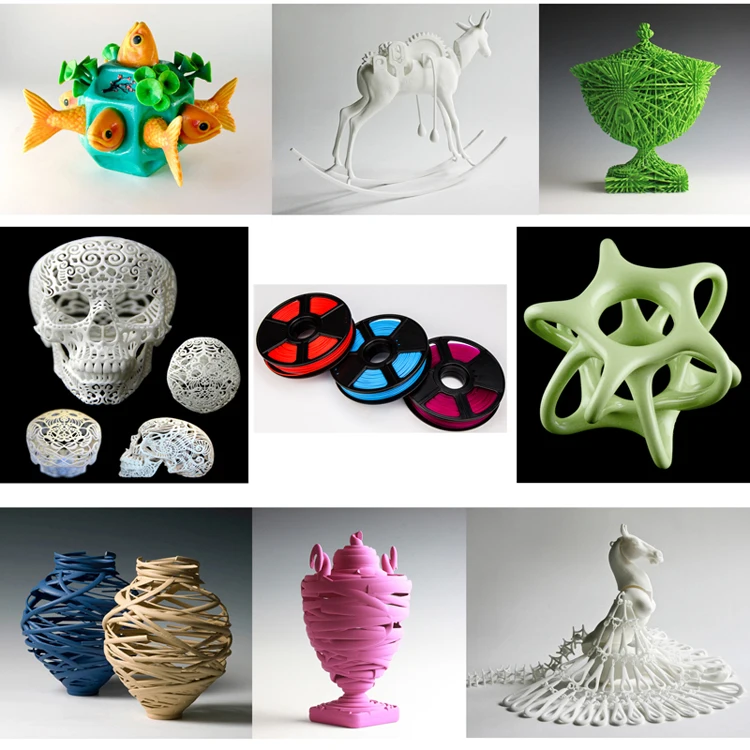
And so let's see what happened:
As you can see from the photo, I tried to make it as compact as possible. Placement of nodes carefully thought out.
A nema34 motor and gearbox was used. When working with such powers, you need to be careful and make such mistakes
Later, accidents and other stops were laid to prevent accidents
The first attempts to assemble the extruder were with many buttons, lights, switches and the like. I was especially annoyed by their installation, placement - this is another headache for me, since I had to redo the extruder so many times. As a result, I decided that there would not be a single button in my extruder! Many of my comrades did not like it, but still this is my extruder and I had just such a desire. Many guys who assembled the extruder used a Chinese PID controller for heating, but the presence of a display in the extruder did not fit into my concept, so the PID controller was programmed with my own.
On the bottom graph you can see the problems that I encountered - namely the pickup. max6675 let me down and had to convert it to a thermistor like on a 3d printer and as you can see the results are better.
Temperature control was carried out using the application again
I would like to pay special attention to the selection of coefficients for heating the extruder. The selection of good odds turned out to be not an easy task for me and it was spent sparingly for about one day.
I also attach a visual diagram of the extruder connection. On the diagram, you can see the main elements connected to the extruder control board, as well as a not tricky circuit.
A little about management. As you can see from the diagram - I used esp8266-01. It uses the standard mqtt connection library. I did not plan to transfer important tasks under her control. Previously, I tried to use the hc-06, hc-12, 433mhz modules but nothing good came of it. It seemed to work, but in a couple of ways - the channel was not quite targeted and * clogged *. The mqtt protocol provides more targeted delivery and messaging, so I opted for it.
Previously, I tried to use the hc-06, hc-12, 433mhz modules but nothing good came of it. It seemed to work, but in a couple of ways - the channel was not quite targeted and * clogged *. The mqtt protocol provides more targeted delivery and messaging, so I opted for it.
The Android application had implementations of the mqtt protocol, which made my life much easier.
The operation of the nodes can be seen on the video
53
Subscribe to the author
Subscribe
Don't want
Hi all. This resource has helped me a lot. It's time to say thank you.
NOT seen...
Read more
2
Subscribe to the author
Subscribe
Don't want
All inclusive (LA, Beziers, Dougie).




